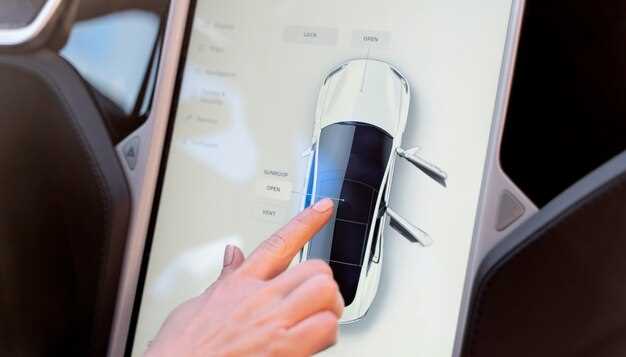
Maintaining a hybrid vehicle is essential for ensuring its optimal performance and longevity. Unlike traditional internal combustion engines, hybrid vehicles combine gasoline engines with electric motors, requiring a unique approach to maintenance. Understanding the specific needs of these vehicles will help you maximize fuel efficiency, reduce emissions, and enhance overall driving experience.
Regular checks and routine maintenance are critical for hybrid vehicles. This includes monitoring battery health, inspecting electrical systems, and ensuring that both the gasoline and electric components are functioning effectively. By staying proactive with maintenance, you can avoid costly repairs and enjoy a seamless transition between power sources.
In this article, we will explore essential tips and best practices for maintaining your hybrid vehicle. From battery care to brake system management, the insights provided will empower you to take charge of your vehicle’s health. Embrace these strategies and embark on a journey of enhanced performance and efficiency with your hybrid vehicle.
Regular Battery Health Checks and Maintenance Practices
Maintaining the battery of a hybrid vehicle is crucial for ensuring optimal performance and longevity. Regular checks help identify potential issues before they escalate, thus avoiding costly repairs. Start by inspecting the battery terminals for corrosion; clean any buildup with a mixture of baking soda and water to facilitate good electrical contact.
Check the battery’s state of charge using a multimeter or diagnostic tool. Most hybrid batteries should maintain a charge between 40% and 80% for optimal performance. If the charge consistently falls below this range, it may indicate a need for professional evaluation or replacement.
Monitor the battery’s temperature, as extreme heat or cold can negatively impact its efficiency. Ensure the cooling system functions properly; if it becomes clogged or damaged, it can lead to overheating. Regularly check the cooling vents to ensure they are clear of debris.
Perform visual inspections of the battery casing for any signs of swelling, cracks, or leaks. Physical damage can compromise battery integrity and safety. If you notice any issues, seek professional assessment immediately.
Lastly, keep software updates for your hybrid vehicle current. Many manufacturers release updates to enhance battery management systems, which can improve efficiency and prolong battery life. By implementing these maintenance practices, you can ensure your hybrid vehicle’s battery remains in optimal condition, thereby enhancing overall vehicle performance.
Optimal Tire Care for Hybrid Vehicles

Maintaining the tires of a hybrid vehicle is crucial for ensuring optimal performance and efficiency. Due to the unique weight distribution and driving characteristics of hybrids, proper tire care can significantly impact fuel economy and overall driving experience.
First, regularly check tire pressure. Hybrid vehicles often benefit from maintaining tires at the manufacturer’s recommended pressure, typically found in the owner’s manual or on a sticker inside the driver’s side door. Under-inflated tires increase rolling resistance, which can reduce fuel efficiency and affect handling.
Next, schedule routine tire rotations. Uneven wear can occur due to the hybrid’s regenerative braking system and its weight distribution. Rotating tires every 5,000 to 7,500 miles helps ensure even tread wear, extending tire life and enhancing traction.
Examine tire tread depth frequently. Adequate tread depth is essential for maintaining traction, especially under wet or slippery conditions. A simple tread depth gauge or the penny test can help you assess when it’s time for new tires. Ensure that the tread depth remains above the minimum legal limit.
Additionally, alignments should not be overlooked. Misalignment can result from driving on uneven surfaces or hitting potholes. Check wheel alignment every couple of years or whenever you notice uneven tire wear or steering issues. Proper alignment increases tire life and maintains optimal fuel efficiency.
Finally, consider investing in tires specifically designed for hybrid vehicles. Eco-friendly tires are engineered to reduce rolling resistance and improve fuel economy without sacrificing performance. Research options that suit your driving habits and climate conditions to make an informed choice.
Engine and Transmission Fluid Management Strategies

Proper management of engine and transmission fluids is crucial for the optimal performance of hybrid vehicles. Regularly monitoring and changing these fluids can enhance efficiency and prolong the lifespan of the vehicle.
For engine oil, ensure to check the level and condition regularly. Hybrid vehicles may require synthetic oil due to its superior stability and performance under varying temperatures. Change the engine oil according to the manufacturer’s recommendations, typically every 5,000 to 10,000 miles, or when the oil appears dark and dirty.
Transmission fluid plays a vital role in the smooth operation of the vehicle’s drivetrain. It is essential to follow the manufacturer’s guidelines regarding the type and change interval for the transmission fluid. Typically, hybrid vehicles may need a fluid change every 30,000 to 60,000 miles. Pay attention to signs of transmission issues, such as slipping or delayed engagement, which may indicate the need for fluid replacement.
When replacing fluids, always use products that meet the specifications set by the manufacturer. This ensures compatibility with the vehicle’s system and maintains optimal performance. For added protection, consider using fluid additives designed to enhance the performance and longevity of engine and transmission fluids.
Additionally, perform regular inspections for leaks in both the engine and transmission systems. Detecting leaks early can prevent more significant issues and costly repairs. If any abnormal smells or discolorations are noticed in the fluids, it is advisable to consult a professional technician.
Keeping a detailed maintenance log of fluid changes and inspections can help track the performance and health of your hybrid vehicle over time. This proactive approach can lead to improved efficiency and a more enjoyable driving experience.





